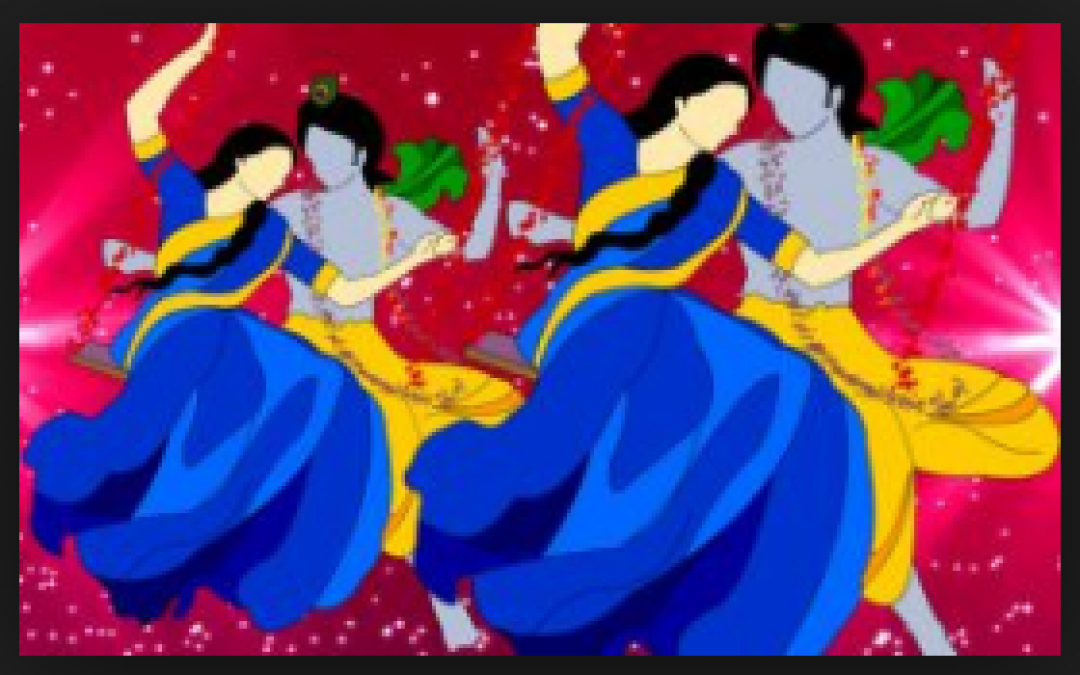
Perhaps no other faith glorifies the idea of love between the sexes as Hinduism. This is evident from the amazing variety of mythical love stories that abound in Sanskrit literature, which is undoubtedly one of the richest treasure hoards of exciting love tales. It is relevant, here, to know about Kamadeva, the Hindu god of carnal love, who is said to arouse physical desire. Born out of the heart of Creator Lord Brahma, Kamadeva is depicted as a youthful being with a greenish or reddish complexion, decked with ornaments and flowers, armed with a bow of sugarcane, strung with a line of honeybees and floral arrowheads. His consorts are the beautiful Rati and Priti, his vehicle is a parrot, his chief ally is Vasanta, the god of spring, and he is accompanied by a band of dancers and performers - Apsaras, Gandharvas, and Kinnaras.
According to a legend, Kamadeva met his end at the hands of Lord Shiva, who incinerated him in the flames of his third eye. Kamadeva had inadvertently wounded the meditating Lord Shiva with one of his arrows of love, which resulted in him falling in love with Parvati, his consort. From then on he is thought to be bodiless; however, Kamadeva has several reincarnations, including Pradyumna, the son of Lord Krishna.
also read The Six Realms of Desire described in Buddhism by Wheel of Life
Shakuntala-Dushyant tale: The legend of the exquisitely beautiful Shakuntala and the mighty king Dushyant is a thrilling love story from the epic Mahabharata, which the great ancient poet Kalidasa retold in his immortal play Abhijnanashakuntalam. While on a hunting trip, King Dushyant of the Puru dynasty meets the hermit-girl Shakuntala. They fall in love with each other and, in the absence of her father, Shakuntala weds the king in a ceremony of 'Gandharva', a form of marriage by mutual consent with Mother Nature as the witness. When the time comes for Dushyant to return to his palace, he promises to send an envoy to escort her to his castle. As a symbolic gesture, he gives her a signet ring.
Legend of Savitri and Satyavan Savitri was the beautiful daughter of a wise and powerful king. The fame of Savitri's beauty spread far and wide, but she refused to marry, saying that she would herself go out in the world and find a husband for herself. So the king chose the best warriors to protect her, and the princess wandered throughout the country searching for a prince of her choice. One day she reached a dense forest, where dwelt a king who had lost his kingdom and fallen into his bad days. Old and blind he lived in a small hut with his wife and son. The son, who was a handsome young prince, was the sole comfort of his parents. He chopped wood and sold it in the countryside, and bought food for his parents, and they lived in love and happiness. Savitri was strongly drawn towards them, and she knew her search had come to an end. Savitri fell in love with the young prince, who was called Satyavan and was known for his legendary generosity.
Radha-Krishna amour : The Radha-Krishna amour is a love legend of all times. It's indeed hard to miss the many legends and paintings illustrating Krishna's love affairs, of which the Radha-Krishna affair is the most memorable. Krishna's relationship with Radha, his favorite among the 'gopis' (cow-herding maidens), has served as a model for male and female love in a variety of art forms, and since the sixteenth century appears prominently as a motif in North Indian paintings. The allegorical love of Radha has found expression in some great Bengali poetical works of Govinda Das, Chaitanya Mahaprabhu, and Jayadeva the author of Geet Govinda. Krishna's youthful dalliances with the 'gopis' are interpreted as symbolic of the loving interplay between God and the human soul. Radha's utterly rapturous love for Krishna and their relationship is often interpreted as the quest for union with the divine. This kind of love is of the highest form of devotion in Vaishnavism and is symbolically represented as the bond between the wife and husband or beloved and lover.
also read Nishan Sahib: Know the Sikh Flag and unknown facts about it